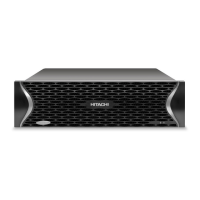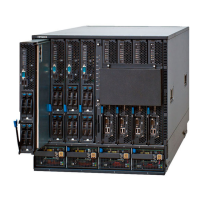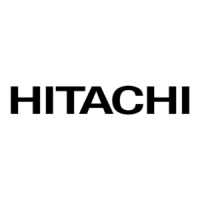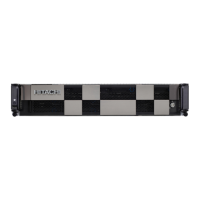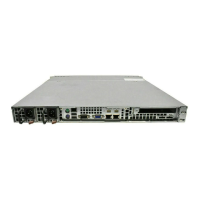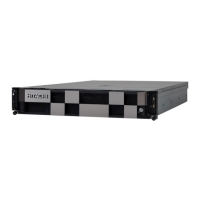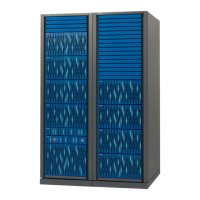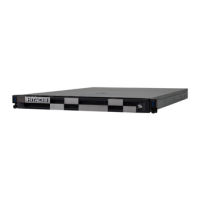Name services
The
HNAS server supports the following name resolution methods:
• Domain Name System (DNS)
• NIS and LDAP (see Directory services)
• Windows Internet Naming Service (WINS)
These methods associate computer identifiers (for example, IP addresses)
with computer (host) names. This allows you to specify computer names
rather than IP addresses in dialog boxes.
The HNAS server supports Dynamic Domain Name System (DDNS) for
updating a name server.
DNS and DDNS
On TCP/IP networks, the Domain Name System (DNS) is used to resolve host
names into IP addresses.
With DNS, records must be created manually for every host name and IP
address. Starting with Windows 2000, Microsoft enabled support for Dynamic
DNS, a DNS database which allows authenticated hosts to automatically add
a record of their host name and IP address, eliminating the need for manual
creation of records.
Registering a CIFS name
When an EVS goes online, the server registers one entry with the configured
DNS servers (in both the forward and reverse lookup zones) for each
configured ADS CIFS name and IP address associated with the EVS. Thus,
the EVS records one entry in DDNS for every configured IP address. If a
server has more than one configured ADS CIFS name, an entry for each IP
address for each configured CIFS name is registered.
Each hostname registered with the DNS server has a Time To Live (TTL)
property of 20 minutes, which is the amount of time other DNS servers and
applications are allowed to cache it. The record's TTL dwindles with passing
time and when the TTL finally reaches zero, the record is removed from the
cache. After the 20-minute expiration point, the client must execute a fresh
name lookup for more information.
The hostname is refreshed every 24 hours. This refresh commences after the
first successful registration. For example, if the server registers its name at
bootup, then every 24 hours after the bootup it refreshes its DNS entry. If
the server cannot register or refresh its name, it goes into recovery mode
Name and directory services 31
Hitachi NAS Platform Network Administration Guide
